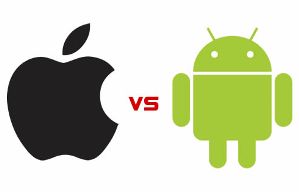The landscape of the Internet is always evolving. Computers are no longer the primary way for users to access websites. With Smartphones, tablet PCs and even video game systems all offering web browsing, it’s becoming increasingly important for webmasters to create sites that are functional across a variety of platforms. Building a separate mobile site was once thought to be the solution to this, but as web access evolves, the trend is moving more toward responsive interface designs.
What is Responsive Web Interface?
Responsive web interfaces are website designs made to adapt to the type of device that a visitor is using. Rather than relying on a static layout with an absolute position, responsive interfaces use a bit of code called a media query to determine what device is being used and adapt accordingly. New techniques in CSS3 allow a site to “look” for the device type when a user arrives and load the corresponding CSS code so that the website displays correctly for that device.
Responsive Interfaces and Mobile Browsing
Mobile browsing has had a great deal of influence on web design. Many sites now have both desktop and mobile versions; others developed mobile-specific apps in response to the increase in mobile users. But mobile browsing has moved beyond Smartphones to include things such as iPads, eReaders and tablet PCs. Each of these devices views the web in different ways. Today’s websites need to be as easy to navigate with a fingertip as with a mouse.
Why Use a Responsive Interface?
The ability of a responsive interface to adapt is known as device agnosticism, and it could be a game-changer in years to come. Responsive sites aren’t just suited for mobile; they can adapt to any screen or browser window size. Whether a user visits a site from a Smartphone or a PC with a wide-screen monitor, the experience will be just as fluid on both devices. This is because responsive interfaces rely on a grid design rather than a collection of stationary parts.
With a fluid grid, elements of a page are dealt with as separate pieces. Using one set of code to adapt to each device used by visitors, CSS3 media queries and other techniques can be used to redistribute images, change the amount of columns displayed on a page, turn link lists into drop-down menus and more. Maintaining a single set of code is also less of a hassle than trying to juggle different site styles for different devices.
Implementing Responsive Design
Before going with a responsive web design, it’s important to consider what’s involved. Responsive interface design requires familiarity with CSS3 code as well at the time and patience to test the resulting site at a variety of screen resolutions. Even with how flexible the design elements are, a responsive interface may not be the solution for every website. In the end, whether or not to use a responsive layout depends on site functionality, the number and types of devices that visitors are using and how much work would be involved if it’s necessary to adapt an existing site.
Though responsive web interfaces don’t yet address all the problems of optimizing a website for multiple devices, the use of a single base of code makes it much easier for webmasters to create flexible layouts. As Internet access continues to evolve, new techniques are likely to emerge to make cross-platform adaptability even easier.



The arrival of androids and smartphones has spur the need of radical changes in the web designing. Because the numbers of mobile internet users increasing very fast, therefore I project that sites that do’not adopt responsive web interface will not able to survive in the coming years.